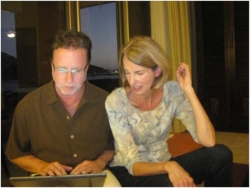March 3, 2011
Leave
 A New York Times article last summer began, “The findings have surfaced with ominous regularity over the last few years, and with little notice: members of the clergy now suffer from obesity, hypertension, and depression at rates higher than most Americans. In the last decade, their use of antidepressants has risen, while their life expectancy has fallen. Many would change jobs if they could.
A New York Times article last summer began, “The findings have surfaced with ominous regularity over the last few years, and with little notice: members of the clergy now suffer from obesity, hypertension, and depression at rates higher than most Americans. In the last decade, their use of antidepressants has risen, while their life expectancy has fallen. Many would change jobs if they could.
A growing number of health care experts and religious leaders have settled on one simple remedy that has long been a touchy subject with many clerics: taking more time off."
Each January I send out an email to my staff entitled, “Where’s Pete?” and in it is listed all the leaves I will be taking for the coming year. Study leave, vacation, outside assignments, it’s all there and there is plenty of it. I learned long ago what the New York Times is now reporting and I take my leave-taking very seriously. I burn through all four weeks of vacation, a few comp days, and both weeks of study leave. And it makes a huge difference. I suffer from many of the stresses clergy face, but burn-out has never been one of them.
My wife and I primarily use vacation to stay connected to family and friends. I am writing this from the beach at Cabo San Lucas where my brother brings us each year.
We will also visit El’s family at her brother’s home in Sarasota, Fla. The time around the 4th of July takes us back to the “Oceans and Mountains” tour of Ohio at a friend’s cabin in the Appalachian foothills and a cottage on Lake Erie. Then at New Year’s the same group in some combination rents a house together somewhere warm.
For me, the regularity and predictability of the breaks makes the work runs in between so much easier to handle. When I am working I am working incredibly hard. But I know that a time away awaits me.
I realize others take all their time in one summer run but for me spreading the breaks out across the year works best. Whatever works for you, it is absolutely imperative that clergy use all the time off allotted them in their letters of agreement. This is as important for the good of the church as the good of the priest. According to the New York Times, it can be a matter of life and death.





